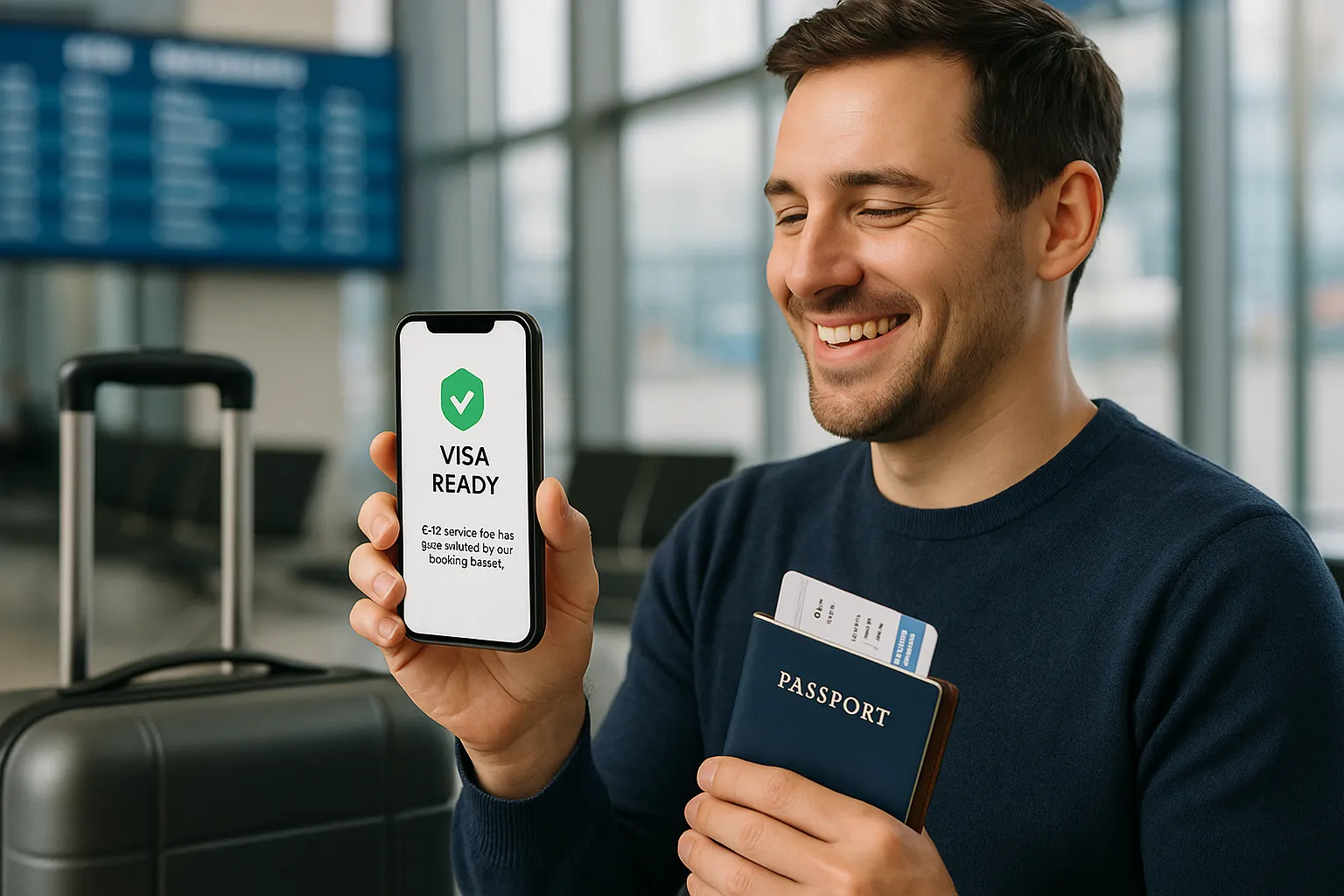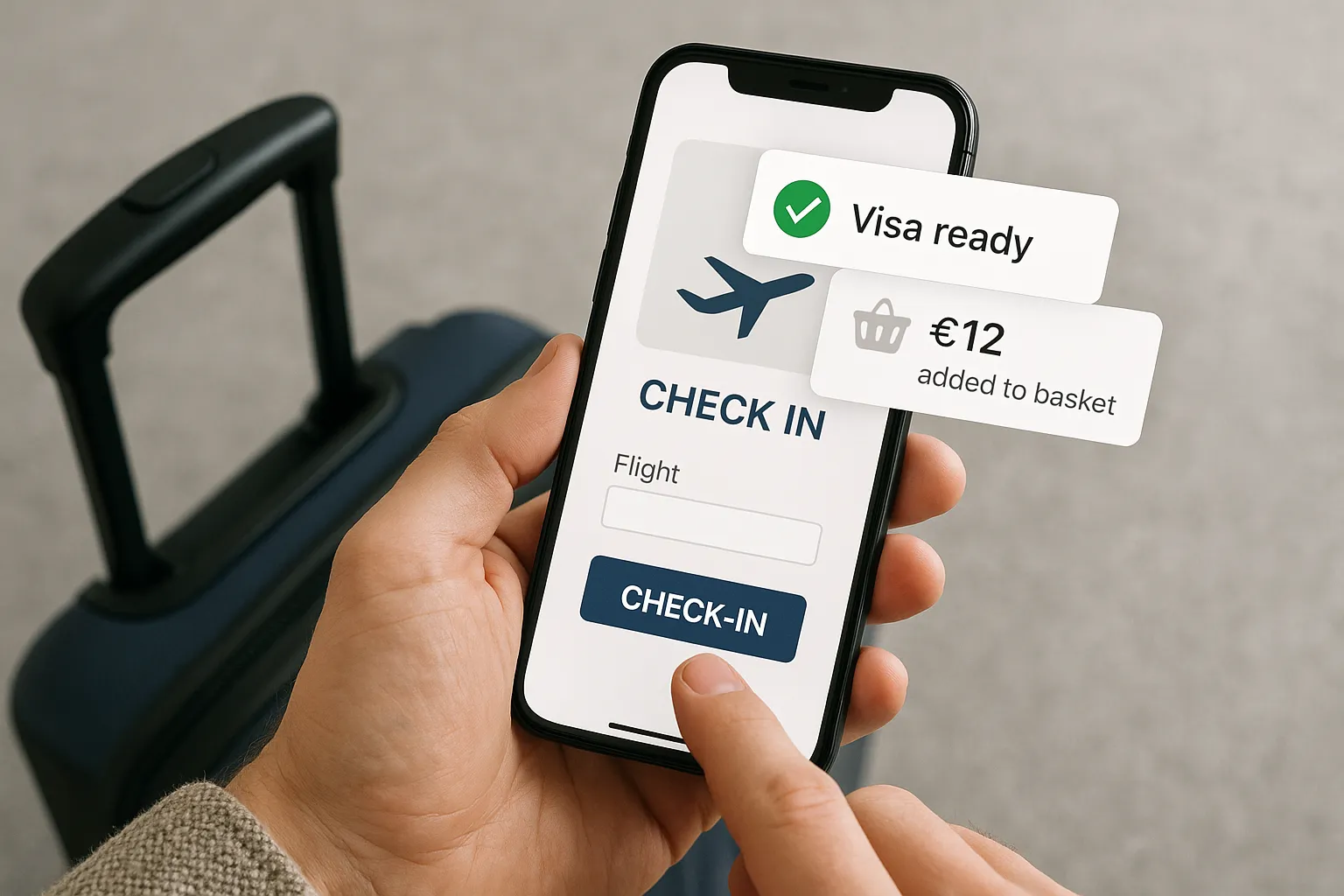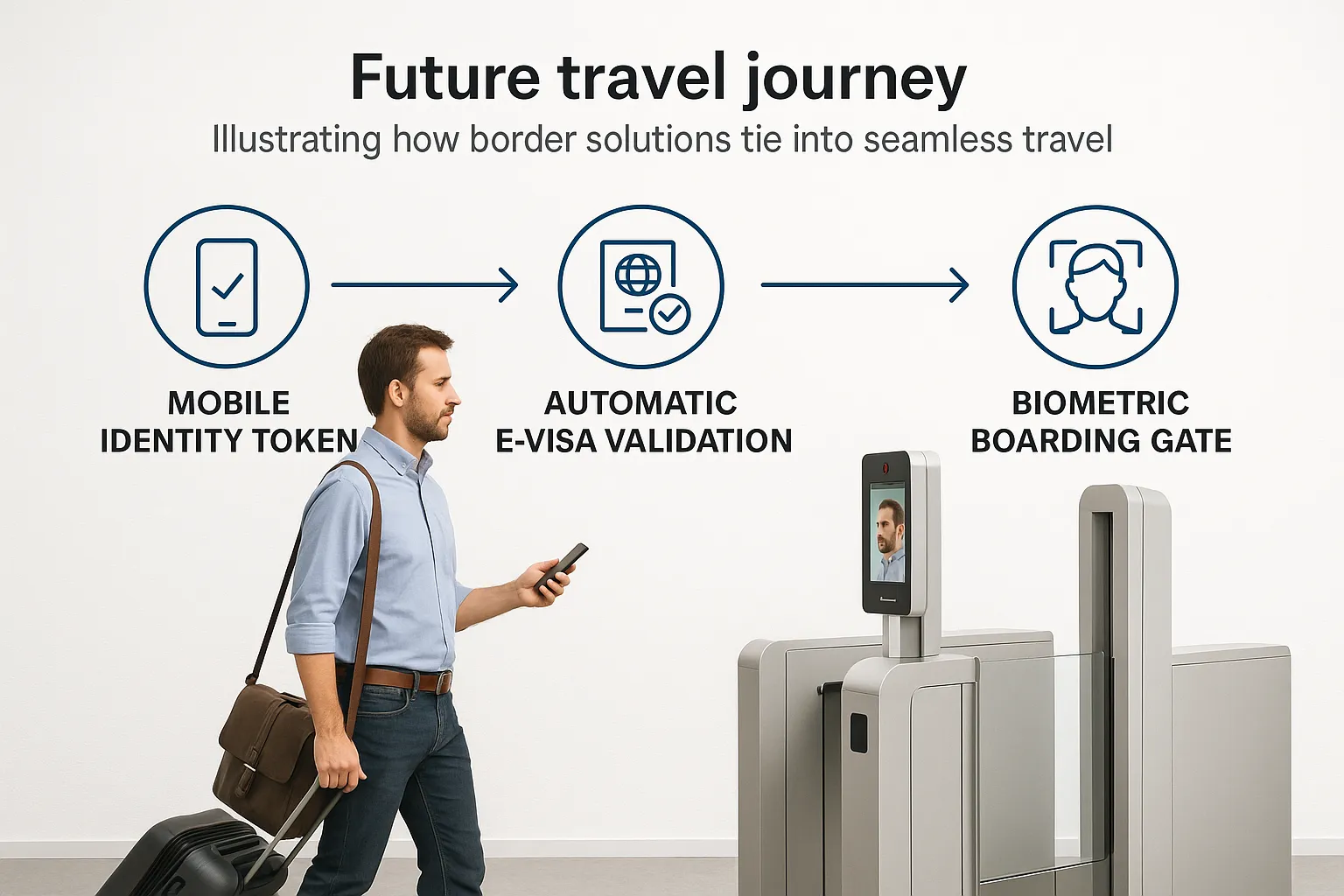Why Border Crossing Solutions Are the Next Big Ancillary Opportunity

Modern airlines earn, on average, less than US $10 per passenger in net margin, while online travel agencies (OTAs) fight for clicks in a world where search ads swallow a third of every booking. The result is an industry obsession with ancillary revenue: seats, bags, insurance, meals, hotels—anything that can turn a razor-thin fare into a profitable transaction.
Yet one of the most lucrative add-ons is still hiding in plain sight. Every international trip requires the traveler to cross a border, and that means dealing with visas, travel authorisations, health attestations or entry forms. Turning that frustration into a paid, value-adding service is the definition of an ancillary opportunity.
What exactly is a “border crossing solution”?
A border crossing solution is a digital service that helps a traveler understand, obtain and prove compliance with all entry requirements for their journey. Typical components include:
- Real-time eligibility data by nationality, route and purpose of trip
- Guided e-visa or ETA (Electronic Travel Authorization) applications
- Digital identity or biometric capture for remote verification
- Secure storage of travel documents and expiry reminders
- Live status updates pushed to the airline’s DCS or the OTA’s trip management page
Solutions range from a lightweight widget that surfaces requirements during checkout to fully white-labelled apps that process and store e-visas end-to-end.
Why market conditions make 2025 the tipping point
- Regulation is exploding. The EU’s ETIAS alone will add 1.4 billion travelers to the mandatory pre-travel authorisation club. The UK, Saudi Arabia, Brazil and Thailand have all announced new digital visa or ETA programmes for 2025-2026.
- Travel has gone mobile. Over 82 % of holiday bookings already start on a phone. Asking customers to leave your flow, visit a government site and come back is a conversion killer.
- Cost of non-compliance is rising. Airlines face fines up to €3,000 per improperly documented passenger. OTAs and tour operators pick up the tab for re-accommodation when clients are denied boarding.
- Customers will pay for peace of mind. Internal A/B tests by leading European carriers show a 55-70 % attach rate for a €12 “visa check & submit” option at the point of booking.
Put together, these forces create a perfect ancillary storm.

Four proven ancillary playbooks
1. Airlines: Document assurance upsell
- Where it sits: After seats & bags in the booking path, or in online check-in.
- Customer promise: “We verify your documents before you reach the airport.”
- Revenue lever: Flat service fee (€10-€15) plus avoided fines.
- Bonus: Turnaround time at the gate drops because agents no longer manually scan PDF visas.
2. OTAs & Metasearch: One-click e-visa bundle
- Where it sits: On the payment page or inside the trip dashboard.
- Customer promise: “Complete your e-visa in three minutes without leaving our site.”
- Revenue lever: Convenience fee or revenue share with the visa provider.
- Bonus: Reduced post-booking churn; travelers lack a reason to cancel and “book direct.”
3. Business travel & TMCs: Policy-compliant visa concierge
- Where it sits: Integrated in the self-booking tool (SBT) or offered by agents.
- Customer promise: “Guaranteed visa compliance with corporate policy and duty-of-care reporting.”
- Revenue lever: Mark-up per application plus SLA-based management fees.
- Bonus: Automatic feed into risk-management platforms like ISOS or Crisis24.
4. Cruise, rail & ferry operators: Shore pass automation
- Where it sits: During ticket purchase or pre-departure email sequences.
- Customer promise: “Arrive and disembark without paperwork.”
- Revenue lever: Bundled in premium or ‘express embarkation’ packages.
- Bonus: Faster boarding = more onboard spend.
From CX friction to checkout feature: customer benefits
Border documentation consistently ranks in the top three pain points of international travel. By embedding a solution directly into the booking flow you:
- Remove anxiety → higher conversion at checkout.
- Shorten path to first trip → fewer abandoned carts.
- Create stickiness → travelers return to the platform that “handles the boring stuff.”
- Unlock data → passport expiry, frequent destinations and document status feed personalised marketing.
That explains why travel brands using document automation report an average 20 % lift in NPS compared with control groups, according to a 2024 Phocuswright survey.
The numbers: modelling the ROI
Assume an OTA with 2 million annual long-haul bookings:
- 60 % of itineraries require some form of pre-travel authorisation.
- Take-up rate for an integrated e-visa service: 40 %.
- Convenience fee: US $13 (typical EU carrier charge today).
2,000,000 × 0.60 × 0.40 × $13 ≈ $6.24 million in gross ancillary revenue.
Subtract provider cost (~$5) and payment fees, and you still add $4 million+ net, while cutting customer-support contacts related to visas by up to 70 %.
Implementation: API, widget or no-code?
Border crossing solutions no longer require a multi-year IT project:
- RESTful API – Deep integration into your booking engine, perfect for custom UX and dynamic pricing. See how it works in detail in How eVisa APIs work: Step by Step.
- White-label webview – Drop-in iframe or redirect with brand colours; fastest time-to-market (2 weeks is common).
- No-code portal – For call-centre agents or brick-and-mortar agencies that need a ready-made back office.
Whichever path you choose, make sure the provider offers:
- Up-to-date compliance library covering 210+ nationalities and 5,000 rule changes per year.
- Multilingual, mobile-first UI to serve global audiences.
- Revenue-share models so your incentives align.
- Airline-grade uptime (99.9 %) and ISO 27001 information security.
(SimpleVisa ticks all these boxes, but the framework applies to any reputable vendor.)
Beyond revenue: operational and regulatory upside
- Reduced denied boarding: One mid-tier EU airline cut incidents by 43 % within six months of launching an automated visa check.
- Lower chargebacks: Travelers can’t claim ignorance of entry rules when the option was offered at checkout.
- Faster disruption recovery: Re-booking engines can auto-validate documentation for new routings.
- ETIAS readiness: Airlines that integrate now avoid a last-minute scramble when the EU system goes live.
Looking ahead: digital identity & smart borders
The adoption curve is set to steepen as:
- IATA ONE ID trials move from pilot to production, linking biometrics, ticket and visa in one token.
- EU Digital Travel Credentials allow smartphone-based passports that exchange data with border systems.
- Seamless corridor agreements between regions (think ASEAN or Mercosur) further raise the need for up-to-date rule engines.
Travel brands that own the document layer today will be best positioned to monetise these innovations tomorrow—whether through subscription-based identity wallets or loyalty partnerships that reward seamless journeys.

Key takeaways for commercial leaders
- Border documentation is no longer a cost centre; done right, it’s a multi-million-dollar ancillary line.
- Complexity created by ETIAS, ETA UK and similar schemes means customers are willing to pay for guidance.
- Implementation can be as quick as two weeks via API, widget or no-code tools.
- Benefits extend beyond revenue: fewer fines, happier customers, stronger retention.
“Adding a visa-in-checkout option generated more incremental revenue in Q1 than seat-selection did in its first full year.”
— Head of Digital Commerce, mid-size EU airline (SimpleVisa customer)
Ready to turn border bureaucracy into profit? Explore practical tips in 8 reasons to streamline travel and elevate customer experience with a Visa Solution or request a demo to see SimpleVisa in action.
Border crossing solutions aren’t just paperwork helpers—they’re the next big ancillary frontier. Get on board now, before your competitors stamp their passport to the future.